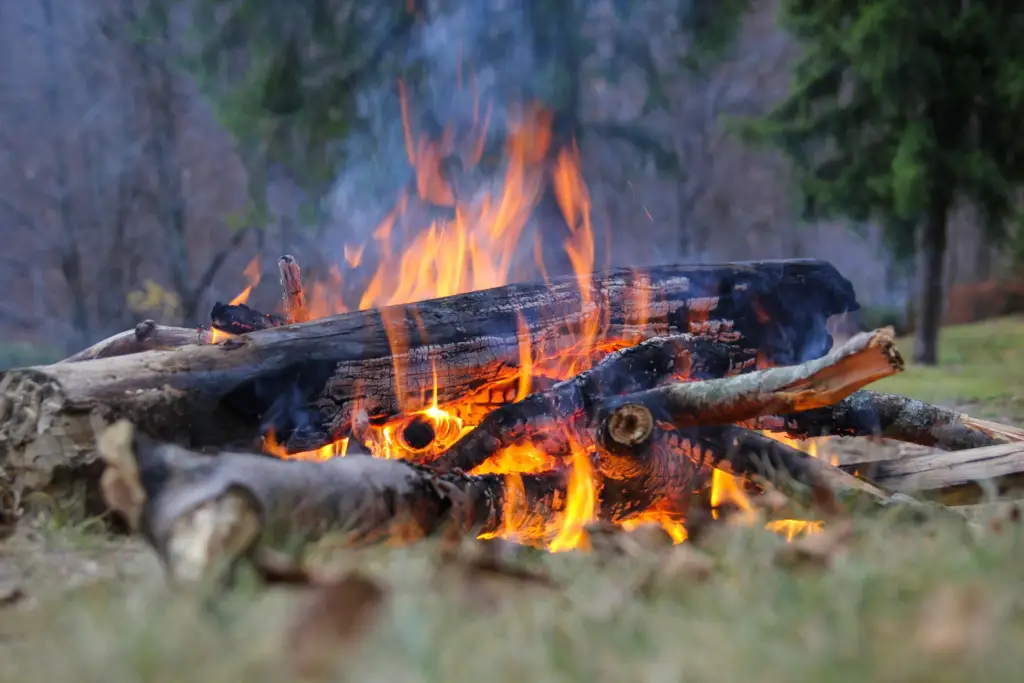The aroma of burning wood evokes a sense of warmth, coziness, and nostalgia. If you’ve ever gathered around a campfire, enjoyed a wood-burning fireplace, or simply lit a candle made from soy or beeswax, you may have noticed that different woods emit distinct and sometimes captivating scents when they burn. In this blog, we’ll explore whether different woods do, indeed, smell different when burning and the factors that influence these fragrances.

The Influence of Wood Type
Yes, different types of wood do produce varying scents when burned. Each wood species contains unique chemical compounds, oils, resins, and volatile organic compounds (VOCs) that contribute to the aroma released during combustion. Here are some examples of woods and their characteristic scents when burned:
- Oak: Oak is known for its earthy and somewhat sweet fragrance. It’s a popular choice for firewood and imparts a pleasant aroma when burned.
- Cedar: Cedarwood emits a distinct and aromatic scent that many find pleasing. It’s commonly used for making cedarwood chips and shavings for incense and aromatic purposes.
- Pine: Pinewood has a fresh, resinous, and slightly sweet fragrance. The scent of burning pine is often associated with the great outdoors and is commonly used in fireplaces and wood stoves.
- Hickory: Hickory wood produces a sweet, smoky aroma with a hint of bacon-like undertones. It’s a favorite for smoking meats and adding a distinctive flavor.
- Apple: Applewood offers a pleasant, fruity scent when burned, making it a popular choice for smoking food and for crafting aromatic chips and chunks for grilling.
- Cherry: Cherry wood burns with a subtle, sweet, and fruity aroma, making it another excellent choice for smoking meats.
- Mesquite: Mesquite wood is known for its intense, smoky fragrance with a hint of spiciness. It’s a popular choice for grilling and smoking, particularly in Southwestern cuisine.
Factors Influencing Wood Fragrance When Burning
Several factors can influence the aroma of burning wood:
- Moisture Content: The moisture content of the wood can significantly impact the scent. Dry wood tends to burn more cleanly and release a more pronounced fragrance compared to damp or green wood.
- Age: The age of the wood can also affect its scent. Older, well-seasoned wood may produce a more potent aroma than freshly cut or green wood.
- Bark and Sap: The presence of bark and sap in the wood can contribute to the scent. Bark often contains more oils and resins, which can add to the aroma.
- Combustion Temperature: The temperature at which the wood burns can influence the release of its aromatic compounds. Higher temperatures may yield more intense fragrances.
- Additives and Impurities: If the wood has been treated with chemicals or exposed to contaminants, it can alter the scent when burned. This is especially relevant for reclaimed or salvaged wood.
Safety Considerations
While enjoying the aromatic scents of burning wood can be a delightful experience, it’s essential to do so safely. Ensure proper ventilation when burning wood indoors, use appropriate equipment, and follow fire safety guidelines to prevent accidents and maintain air quality.
Firewood from Hagan & Sons
When you want clean, seasoned firewood, look no further than Hagan and Sons Tree Service. We offer a variety of woods and can deliver cords straight to your door. Learn more about our firewood here, or contact us now to place an order.
